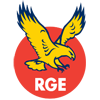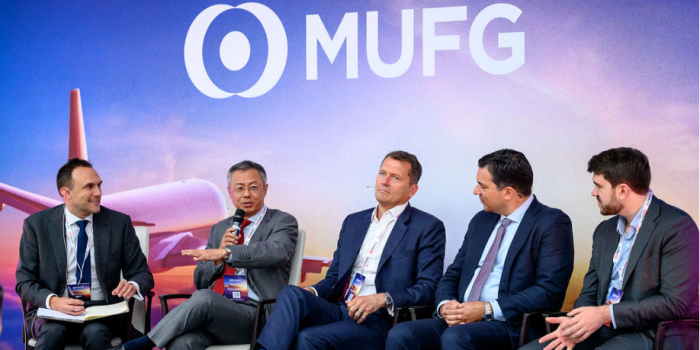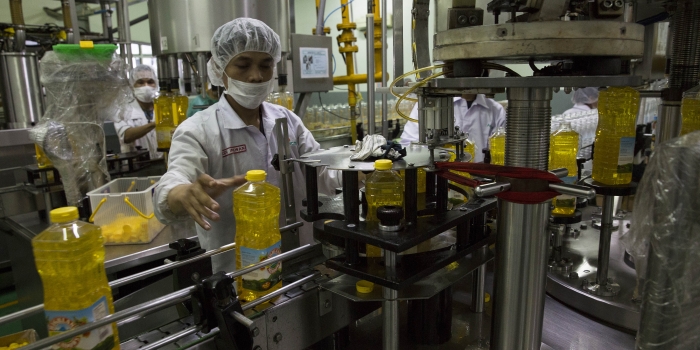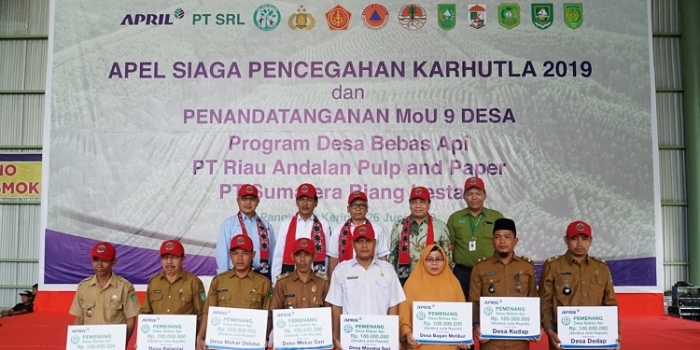The aviation industry is at a critical juncture, facing dual challenges of meeting growing travel demand while significantly reducing its carbon footprint. Sustainable Aviation Fuel (SAF) has emerged as a pivotal solution in this context, offering a pathway to decarbonise aviation and transition towards a green economy and society. Accelerating the widespread implementation of SAF will require unwavering commitment and consistent action from all stakeholders – government, businesses, and consumers alike.
This was the key message of a recent panel at the recent MUFG Aviation Conference in London, which brought together business and industry leaders to discuss the current state and future prospects of SAF. The speakers included Bey Soo Khiang, Vice Chairman of RGE; Jan Toschka, Chief Executive Officer of Zaffra; William-James Kettlewell, Counsel at Baker McKenzie; Jimmy Samartzis, Chief Executive Officer of LanzaJet, and moderator Edward Craddock, Managing Director of the Energy Investment Banking Division for EMEA at MUFG.
The enormous growth potential of Sustainable Aviation Fuel (SAF)
SAF is far from new – the first instance of usage by airlines was more than a decade ago. Since then, the development and use of SAF have progressed significantly, aligning with the increasing push for sustainability and the transition towards a green economy and society.
According to Jan, compared to conventional aviation jet fuel, SAF currently takes up a small share of the pie, with production at 0.5% of fossil fuel-based jet fuel production. In 2024, global production of SAF is estimated to reach approximately 1.5 million tons, a substantial increase from the previous years but still a fraction of the 300 million tons of jet fuel consumed annually.
Soo Khiang added that the current production of SAF stands at only 160 million litres but it would require around 500 billion litres for the aviation industry to achieve net zero by 2050. He expects this to soon change, as the global aviation industry increasingly maximise the usage of SAF which is set to become the global standard for aviation fuel in the future, with projections indicating that it could account for two-thirds of global aviation fuel within the next two to three decades.
Technological pathways and challenges
Jimmy acknowledged the fact that the timeline for achieving net zero emission in aviation in 2050 is rapidly closing in, at just 26 years which is relatively short for an industry of this scale. To reach this goal, he highlighted the need to develop a robust ecosystem that supports the growth of the industry, anchored in effective technology. Developing and implementing these pioneering technologies to overhaul decades of reliance on fossil fuels will be a complex and demanding task.
SAF can be produced through various technological pathways, broadly categorised into bio-based feedstocks and synthetic processes. Bio-based feedstocks, such as used cooking oil and agricultural residues, are currently more mature and widely used. In contrast, synthetic processes, such as power-to-liquid technologies, are still in the developmental stage and are much more capital-intensive.
Jan emphasised that while bio-based SAF is currently leading the market, the future will likely see a significant contribution from synthetic SAF. By 2040, it is anticipated that a substantial portion of SAF will be produced synthetically, driven by advancements in technology and increased investment.
In addressing the debate between food versus fuel, Soo Khiang highlighted that the issue of land use for crop cultivation is more pressing in Europe compared to North America or Asia due to land scarcity. He shared that RGE has been actively contributing to mitigating these concerns by supplying feedstock in the form of used cooking oil to Cepsa, its partner in Spain. This collaboration underscores that food security is not currently a significant issue.
Soo Khiang further shared that RGE is constructing an aviation fuel processing plant with Cepsa, which is set to become the largest facility of its kind in Southern Europe when it begins production in 2026. The plant will utilise agriculture waste and residues and used cooking oils as feedstocks to produce SAF.
Regulatory and policy support
The role of government regulation and policy support is crucial in the broader implementation of SAF. With more countries acknowledging the benefits of SAF, the number of SAF producing plants has increased globally. However, this presents its own set of challenges. Given that SAF is more expensive to produce, governments must navigate the cost implications and streamline processes to make it more feasible.
Different regions have adopted varying approaches to stimulate SAF production and usage. In the United States, with the ability to produce an amount of SAF as required, would lean more onto the supply side where they have a tax-based system to encourage airline businesses to employ SAF in exchange for tax credits. Conversely in Europe, there would be a greater interest in, and therefore greater demand for, SAF but they do not necessarily have the supply to fulfil this demand.
William-James highlighted that regulatory frameworks are essential for creating a stable market for SAF. However, the approaches differ significantly across regions, with the United States providing direct financial incentives and Europe focusing on regulatory mandates. Both strategies aim to increase SAF adoption but through different mechanisms.
Overcoming challenges
William-James also commented on the mandatory need for airline companies to disclose the amount of SAF that they use in their operations. He emphasised the Book and Claim model, a flexible method where a sustainability claim made by a company is separated from the physical flow of those goods.
Jan supported this point, highlighting that this model provides proof (in the form of certification) of a business’s SAF production and usage, improving overall logistical effectiveness and efficiency.
Another challenge is the balance between demand and supply, and how different countries and geographies mandate SAF. On this note, Soo Khiang shared that SAF cannot be mandated forcefully; this might instead trigger a boycott. To alleviate processes and achieve a balance between the supply and demand of SAF globally, governments must be ready to support and incentivise businesses through funding, and drive initiatives that both improve the economy and increase the popularity of SAF. He further stressed that a readily available supply of SAF does not equate to an increase in demand. For consumer demand to improve, airline businesses must assure consumers and investors that their money is being used for the advancement of SAF.
Beyond the frontier
Concluding the session, Soo Khiang discussed the relationship between risk and reward, noting that greater risks can lead to greater rewards, depending on an organisation’s willingness to embrace such challenges. He emphasised that SAF is undeniably the future, and businesses that invest in SAF processes and adoption today will gain a “first-mover advantage” and position themselves as leaders of tomorrow.






